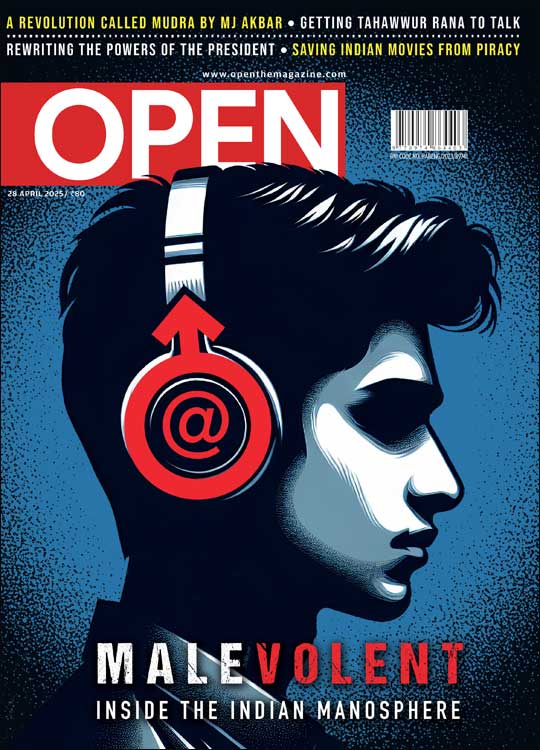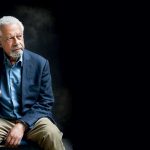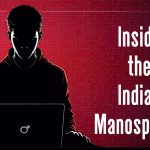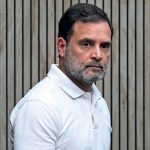Narendra Modi 2017: Unabashedly Hindu
The politics of the Right becomes a cultural assertion
/wp-content/uploads/2017/10/Modi1_2.jpg)
THE DAY AFTER DEEPAVALI, Prime Minister Narendra Modi was at the Kedarnath shrine to Lord Shiva in Uttarakhand, exhorting a gathering of devotees to chant ‘Jai Jai Kedar, Jai Jai Baba Bhole’ along with him. He had discarded his usual sartorial style in favour of a light floral shawl, and had his forehead smeared with sandalwood paste and turmeric, with a bright red tika placed in the middle by the shrine’s purohits. It was Modi’s first visit to this high-altitude pilgrimage centre, among the holiest for Hindus, after a flash flood in 2013 damaged a part of the temple structure. He was there to lay the foundation stone for an ambitious temple development plan which envisions road widening, a multi-storey residential quarter for its high priests, high-capacity lodging and dining facilities for pilgrims and amenities such as Wi-Fi connectivity.
What stood out for its rarity, however, was the sight of an Indian Prime Minister unabashedly— and proudly—addressing an audience in the name of a Hindu deity, even asking for the Lord’s blessings for the health and prosperity of country’s “sava sau crore janata” (1.25 billion people). In doing so, he broke away from a decades-long legacy of the country’s top political post marked by a certain coyness—or hypocrisy at times in the name of secularism—about publicly celebrating India’s predominantly Hindu culture and religion. Modi’s was at once a clear political statement and an outright rejection of the stance of his predecessors whose interpretation of India’s secular polity involved officially overlooking or distancing themselves from all that was identified with Hinduism.
The Prime Minister’s address, too, was an easy-to-comprehend conversational discourse, so popular in many parts of the country. To him, it appears, politics and religion can form as cohesive an equation as people have with divinity. “When I was younger, I came to Kedarnath and would have love to stay and serve Bholenath forever, but he had different plans for me,” said Modi, “He sent me back saying, ‘Every one of your compatriots are babas, serve them as you would serve me.’ I took his advice…history will record if I did a good job.”
And then, in his trademark manner of political point-scoring, the Prime Minister took a swipe at the Congress, questioning its leaders’ relationship with their Hindu antecedents. That Rahul Gandhi had been visiting temple after temple in Gujarat was the context in which Modi drew his comparisons. “When I was Gujarat Chief Minister, my government offered to rebuild this holy shrine [in Kedarnath]. The leaders of the Congress government here [in Uttarakhand] agreed in private. But perhaps after they discussed this with their bosses in Delhi, they suddenly backed out. Maybe my rebuilding the Kedarnath shrine was politically inconvenient to their tallest leaders. So, I stepped back so that their leaders were not inconvenienced by my offer to rebuild this sacred shrine,” said Modi.
The barbs at Rahul Gandhi come at a time when he is preparing for his elevation to the Congress’ top post and campaigning extensively across Gujarat for its upcoming Assembly polls. From Dwarkadish to Chotila to Khodal Dham to Dasi Jeevan, the 47-year-old Gandhi has come calling at every major place of Hindu worship in the Prime Minister’s home state. However, it is unclear whether the Congress leader’s public displays of faith—termed religious opportunism by his critics—will impress voters in a state where Modi has sought to frame the contest as one of Dynasty versus Development. Rahul’s last known act of spirituality was his disappearance from the thick of Delhi politics once into what was described as a meditation retreat to a mystery location in the Himalayas. Modi’s calculated act of upping the religion quotient in his political appeal might now make it harder still for Gandhi to gain the favour of devout voters.
The impact of politics inflected with religious appeal is evident in UP. A Deepavali celebration drew attention to the Bhavya Rama Mandir issue, which gave BJP electoral traction
Appeals to a Hindu identity have already had a significant role in Modi’s ascent to power at the Centre and that of the BJP’s alongside. The party has allied itself not just with the historical, cultural and religious moorings of Hinduism, but also its modern interpretations and renewal aspirations. In the late 80s and early 90s, the party got millions of Hindus to step out of the closet and display pride in their faith with its catchy ‘Garv Se Kaho Hum Hindu Hain’ slogan, which ran alongside its Ram Janmabhoomi movement for a temple in Ayodhya. From two Lok Sabha seats in 1984, the Hindu war cry of self-esteem took the BJP to 85 seats in 1989. Modi, the ‘Hindu Hriday Samrat’ was widely expected to take the Hindutva project to its next level: the party achieved its first ever Parliamentary majority in 2014, notching up 282 seats. This time, there is a global dimension to the effort.
The BJP and its associates have adopted a multi-pronged strategy both at home and abroad to reconstruct a narrative of pan- Indian Hinduism, modern and capable of taking on the dominant narratives of both Islam and the Christian West. The project was put into operation after Modi’s elevation to prime ministership, after which it became difficult for his critics in the West to carry on with running him down. He was now the elected leader of the world’s largest democracy.
Abroad, Hindu organisations such as the VHP, part of the Sangh Parivar, and those run by influential Indians—mostly Americans of Gujarati origin—have been rejuvenated. Modi’s supporters in the US have already been a highly visible part of his efforts to project power abroad. His blockbuster speech at Madison Square Garden was compared by his acolytes to Swami Vivekananda’s speech at the World Parliament of Religions in Chicago in 1893.
Under the Obama and Trump administrations, Americans of Indian origin have gained a new measure of influence in the US by highlighting the community’s high-level contributions to the country in spheres as diverse as technology, politics and academia. In cultural and religious fields where Hindu perspectives have not made equivalent headway, the dominant narratives are now being challenged aggressively under Modi’s leadership.
Repackaging Hinduism for the West has also meant finding areas of common concern, such as extremism among adherents of Islam both in the US and in India. This has led to the White House abandoning its traditional celebration to mark the end of Ramadan, a decision taken by US President Donald Trump this summer. While Bill Clinton, George Bush and Barack Obama had regularly held Iftaar dinners, Trump apparently sees no need for symbols of empathy with Muslims. Trump had also skipped Passover Seder at the White House earlier and had his Hannukah party boycotted by some Jewish politicians. This October, though, the ‘Festival of Lights’ came to mean little Jewish and everything Hindu as he held a Deepavali ceremony at the White House.
The BJP has allied itself not just with the Hindu identity’s historical, cultural and religious moorings but also its modern interpretations and renewal aspirations
In another signal of the two countries’ deepening bonds and shared interests and worldview, the Trump administration’s ambassador to the UN, Nikki Haley—herself of Indian origin— recently declared, “India can help the USA keep an eye on Pakistan in the region.” Drone attacks by the US in the Afghanistan- Pakistan border area, it has been noted, are a piece with the Modi regime’s view on Pakistan’s sponsorship of terrorism in the region. Not surprisingly, Trump has hailed what he calls a new era in friendly ties with Modi and India, “the Home of the Hindu faith”. “The Lighting of the diya is typically celebrated by families in their homes. Today, we proudly celebrate this holiday in the people’s house. In so doing, we reaffirm that Indian-Americans and Hindu- Americans are truly cherished, treasured and beloved members of our great American family,” Trump said in brief remarks at the White House, with ‘Indian Americans’ and ‘Hindu Americans’ referred to separately.
The higher profile that Modi has been instrumental in according Hinduism on the world stage has meant that for millions of Indians, being Hindu is no longer something to be hidden under a bushel. The echoes of Modi’s 2014 speech at Madison Square Garden in New York, where he appeared more like a rockstar in saffron and began his address with ‘Bharat Mata ki Jai’, seem to have reached far and wide. This has come as a morale boost for vast numbers even back home.
THE IMPACT OF politics inflected with religious appeal has been especially evident in Uttar Pradesh, India’s largest state, where the BJP won an Assembly election with a resounding mandate earlier this year. A day prior to Deepavali, Chief Minister Yogi Adityanath, who happens to be the first ever incumbent top priest of a temple to head an elected government in India, hosted a grand celebration of Lord Rama’s return to Ayodhya by lighting 200,000 earthenware lamps on the banks of the Sarayu river in Ayodhya. As part of Deepotsav, he also garlanded actors who were to play Rama, Sita and Laxman in a stage production of the epic as they alighted from their ‘Pushpak Viman’ (a helicopter). The celebration was not just aimed at establishing Ayodhya’s Deepavali as the grandest in the country and setting a Guinness Record for lamp lights, it was meant to draw popular attention back to the BJP’s proposed construction of a Bhavya Rama Mandir, the very issue that first gave it electoral traction. By giving expression to sentiments that have long been suppressed, the Yogi has conveyed a break with the past no less remarkable than Modi has.
Repackaging Hinduism for the West means finding areas of common concern like Islamic extremism. Trump didn’t mark the end of Ramadan, but held a Deepavali ceremony
Kedarnath was not the first occasion on which Modi as Prime Minister spoke of his Hindu heritage. Months earlier, he had flown down to the Isha Yoga Centre at Coimbatore in Tamil Nadu, the campus of spiritual guru Jaggi Vasudev, for the consecration of a 116-foot statue of Adi Yogi on Maha Shivaratri, among the most auspicious days for practising Hindus. As Adi Yogi, Mahadeva is recorded in scriptures as having handed down Yoga to posterity.
For Modi, who was also instrumental in the UN declaring June 21st as International Yoga Day, the event perhaps held special significance for another reason. It served as a means to endorse the adaptive yogic approach of popular spiritual leaders who have sought to place an ancient religion in the context of modern life.
TAKEN TOGETHER, THESE events are no more than a politico-religious display catering to a specific constituency. They go deep into India’s history. Resistance to Hindutva has been instinctive to many and it is telling that new interpretations of the interplay between religion and politics in India are not being penned in this country, but afar. The best example of this new understanding is the thesis of Michael Walzer, an emeritus professor at the Institute for Advanced Study in Princeton. In The Paradox of Liberation: Secular Revolutions and Religious Counterrevolutions (2015), he compares India, Israel and Algeria as examples of ‘what went wrong’ with projects of secularising these countries after they gained independence. Walzer’s answer is simple: all three were traditional societies infused with religion, a basic fact of life that their modernising elite chose not only to ignore but actively oppose.
In India, Walzer notes that Jawaharlal Nehru, the first Prime Minister, spoke an alien language that was dismissive of the majority religion, Hinduism. ‘But with regard to the religious traditions that played such a large part in shaping Indian civilization—and determining the customary roles of women—Nehru was mostly tone deaf. Nor did he have much feeling for the emotional life of his own people, in which religion had a significant role…’
In contrast, Nehru’s mentor, Mahatma Gandhi, was much more careful. ‘Even when Gandhi openly opposed Hindu beliefs and practices, he spoke to the people in a religious language that was largely foreign to the other leaders of the national liberation movement,’ says Walzer.
Over time, this had a profound effect on Indian politics in terms of what could be said, done or expected in the interplay between religion and politics. Nehru’s approach to the majority religion, one seen as ranging from apathy to hostility, soon turned into something else at the hands of his successors, who were less secure as politicians and needed crutches to ensure electoral viability, some of which turned into tools of vote-bank politics that pandered to regressive tendencies among minorities.
The rest is history: In a slow turn from the 1980s, this led to what Walzer calls a ‘religious counterrevolution’ that turned the tables on accepted notions of secularism and political ‘good behaviour’. What was seen on the banks of the Sarayu on Deepavali and what the Prime Minister did in Kedarnath are the notations of an Indian counter-revolution.
About The Author
CURRENT ISSUE
MOst Popular
3

/wp-content/uploads/2025/04/Cover-Manosphere.jpg)














More Columns
‘Colonialism Is a Kind of Theft,’ says Abdulrazak Gurnah Nandini Nair
Bill Aitken (1934 – 2025): Man of the Mountains Nandini Nair
The Pink Office Saumyaa Vohra